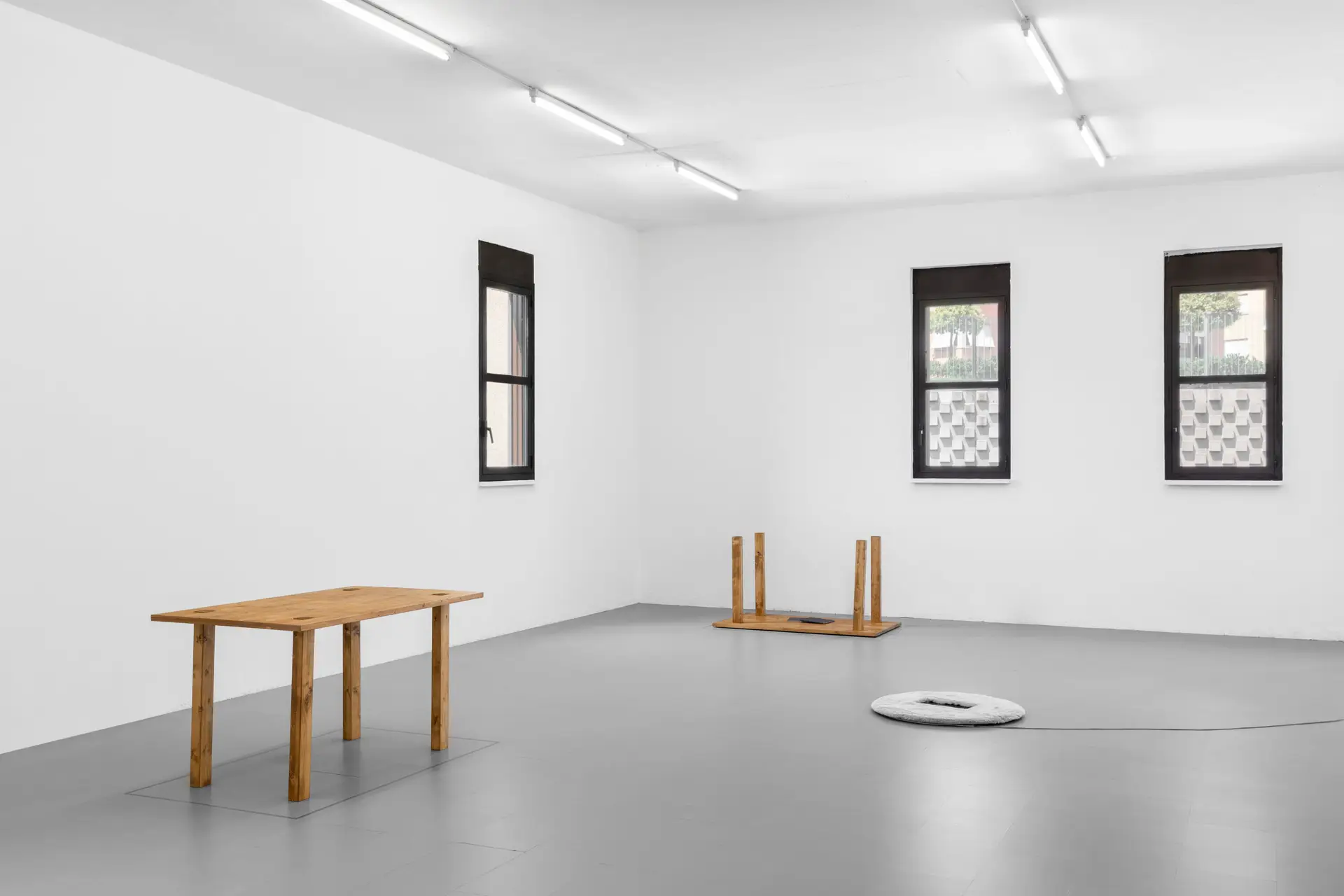






ARCHETYPAL COLLAPSE (stai a tavola con noi anche se non mangi)
2022
wood, metal weights, score, 85 x 140 x 70 cm
Exploration of the conceptual space of grasping, fluidity, and tension between human bodies and the materials/objects that form a surround. What occurs around a dining table?
The spectator is invited to interact with the piece by adding weight on the center of the table, causing it to collapse in on itself. The fall reveals the overturned image of the table and by extension of the domestic world, of the customs and norms that make up the ritual of the meal in the household context.
An inevitable physical twitching responds to the crashing noise, which pierces the walls of the space echoing down the stairs. “Is it the table that tips over or the world that turns upside down and the table the only thing left standing?”
The installation challenges the viewer’s assumptions about stability and familiar hierarchies.
“A table that is on the cusp of being made and broken all at once. One built with hands but not controlled by them. At this table the menu is not set – the space is laid bare, ready to be filled with the fruits of plenty, those yields of delights and discontents alike. Johan Huzinga wrote that “Play is older than culture, for culture, however inadequately defined, always presupposes human society, and animals have not waited for man to teach them their playing”. Naturally, it is also through play that one can learn. Which is to say, that it is also through play that one may unlearn. Here play is not so much about winning as it is about losing control. So come along and take a place at the table. Bring something, or just come as you are, but be careful not to lay your elbows too heavily in this space, because it may all come crashing down before you’ve had time to say grace.”
Huizinga, Johan. Homo Ludens: A Study of the Play Element in Culture. New York: Harper & Row. 1970. p 01.
Text written by Emmet Ward